Data interpretation Numbers Worksheets for 6-Year-Olds
5 filtered results
-
From - To
Our "Data Interpretation Numbers Worksheets for 6-Year-Olds" enhance your child's analytical and numerical skills through engaging activities. Designed specifically for young learners, these printable worksheets from Kids Academy use fun, interactive exercises to teach children how to interpret and analyze data. They will explore sorting, counting, and basic graph reading, helping them understand numerical information in everyday contexts. Perfect for both classroom and at-home learning, these worksheets will build a strong foundation for future math success. Help your child develop essential math skills with our easy-to-follow, educational worksheets today!


Making a Graph: Creepy Crawlies Worksheet
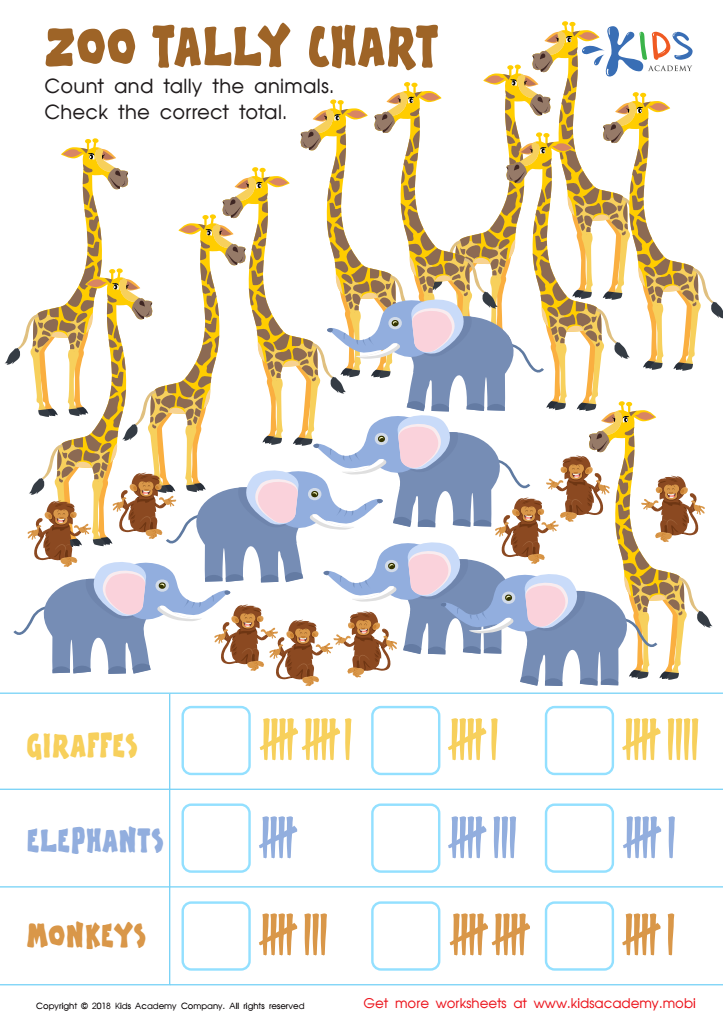

Zoo Tally Chart Worksheet
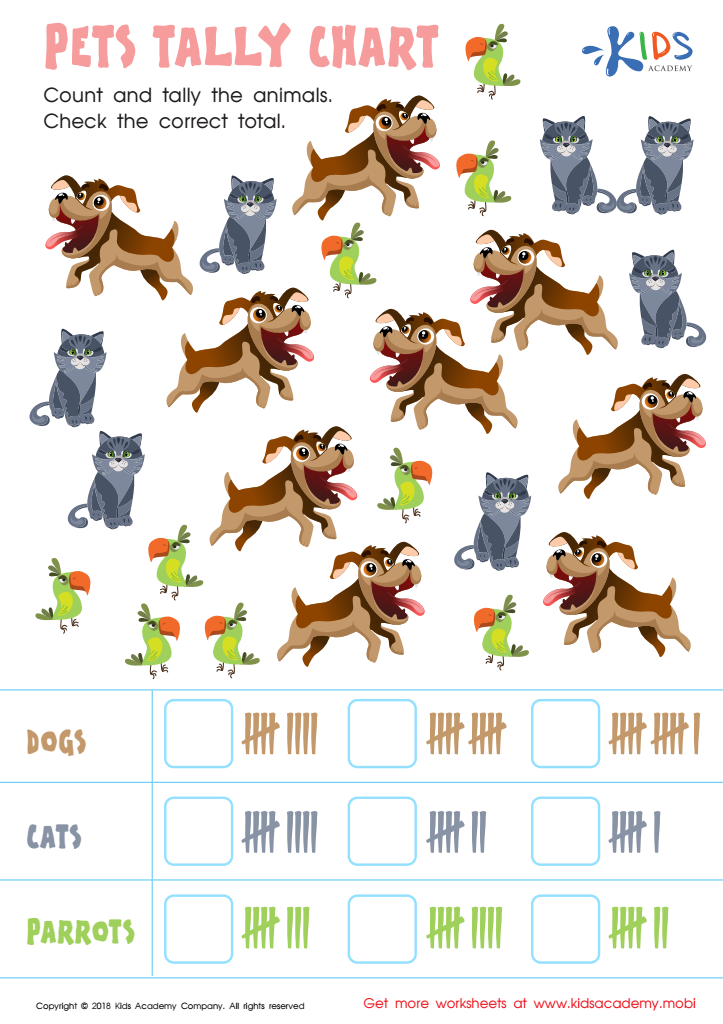

Pets Tally Chart Worksheet
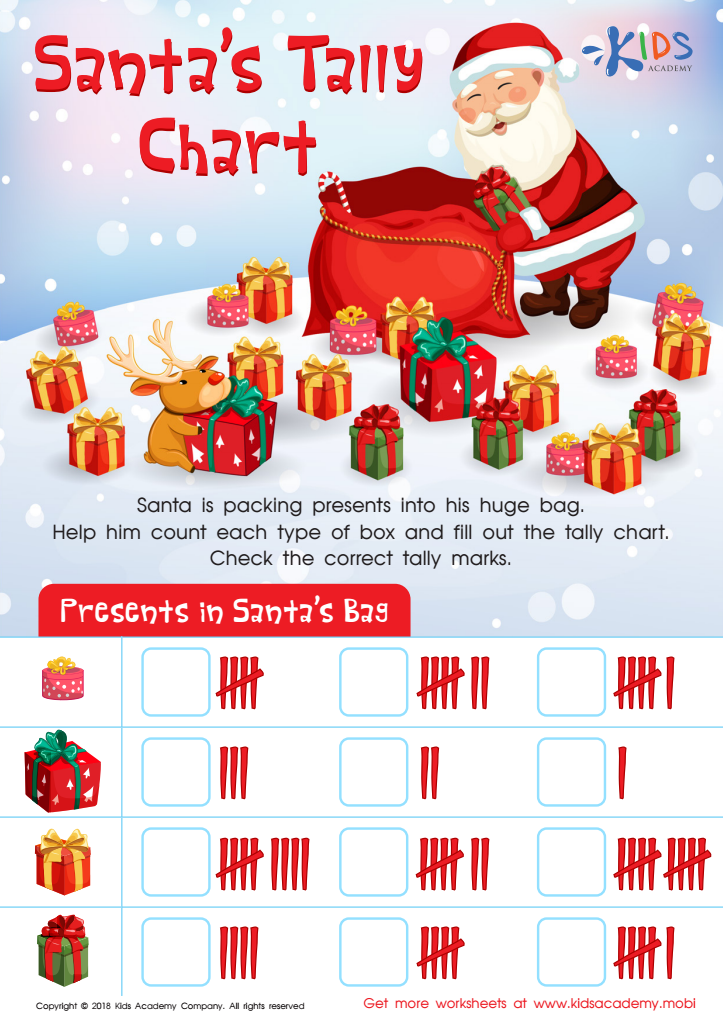

Santa Tally Chart Worksheet
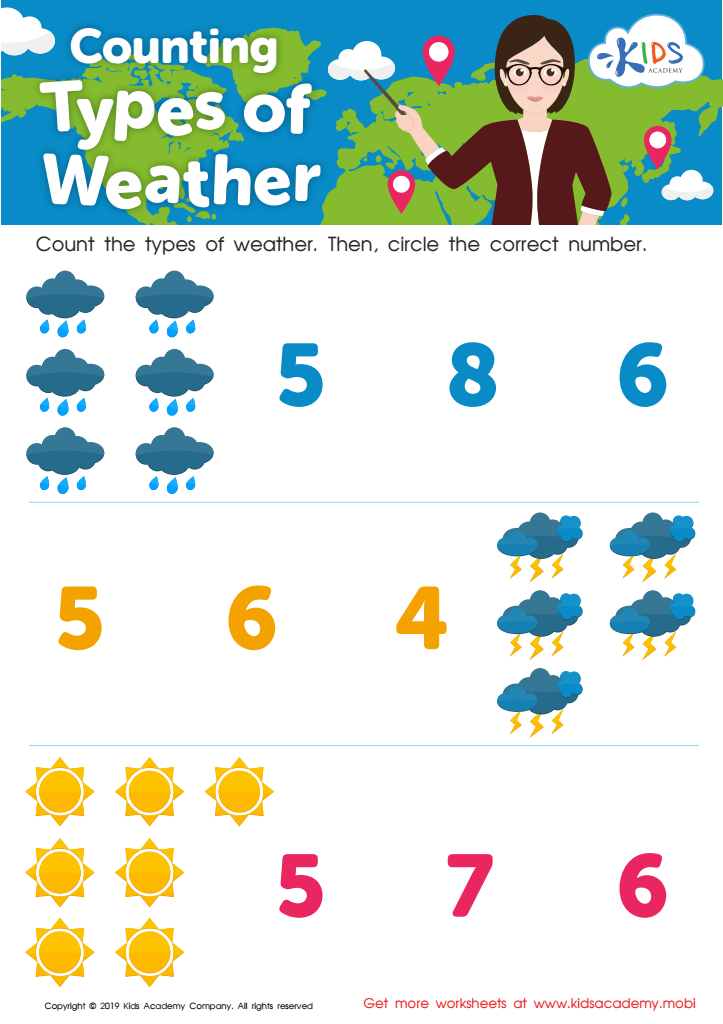

Counting Types of Weather Worksheet
Parents and teachers should care deeply about introducing data interpretation numbers to 6-year-olds for several compelling reasons. First, engaging children with basic data interpretation skills at a young age forms a critical part of their numeracy development. Understanding these concepts helps children make sense of the world through numbers, enhancing their ability to process information logically and make decisions based on evidence.
Second, early exposure to data interpretation fosters critical thinking and analytical skills. By interpreting numbers, children learn to identify patterns, make predictions, and solve problems. These foundational skills are crucial for academic success across various subjects, not just mathematics.
Third, introducing data interpretation nurtures lifelong learning and adaptability. In today's data-driven society, the ability to analyze and interpret data is immensely valuable in numerous careers and everyday situations. Early familiarity sets the stage for future proficiency and interest in STEM (Science, Technology, Engineering, and Mathematics) fields.
Finally, teaching data interpretation numbers can be engaging and fun. It can involve activities like sorting objects, counting, and using visual aids like charts and graphs. These interactive exercises capture children's interest and make learning enjoyable.
In summary, developing data interpretation skills in 6-year-olds lays the groundwork for their cognitive development, academic success, and future readiness in an increasingly data-centric world.
 Assign to My Students
Assign to My Students






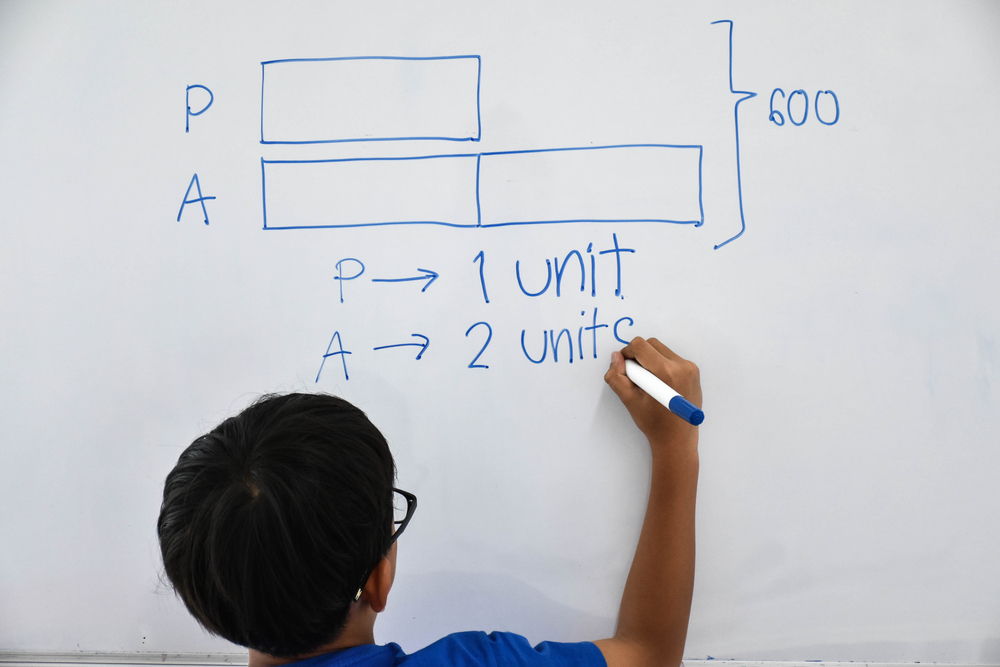
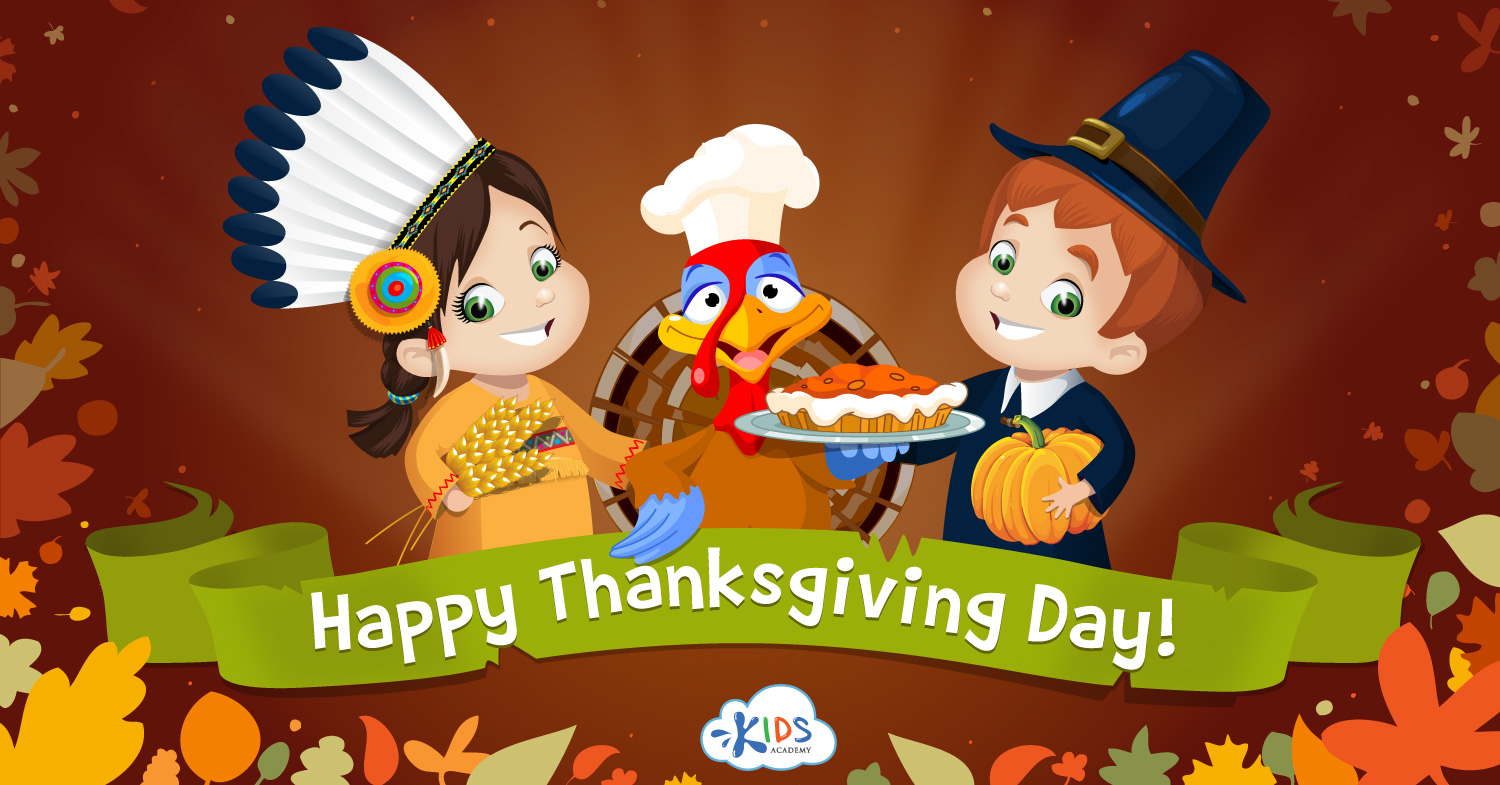

%20(1).jpg)











